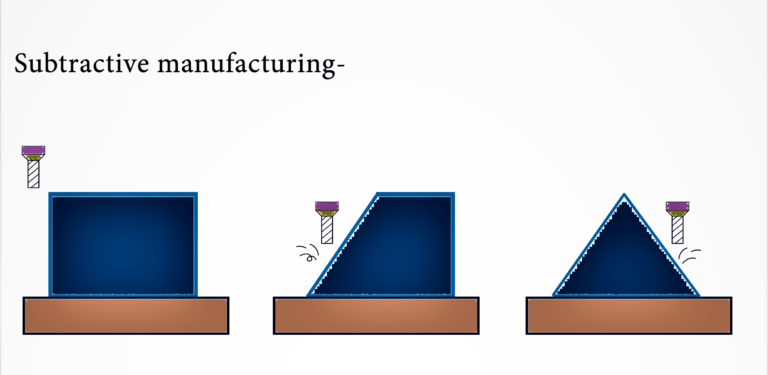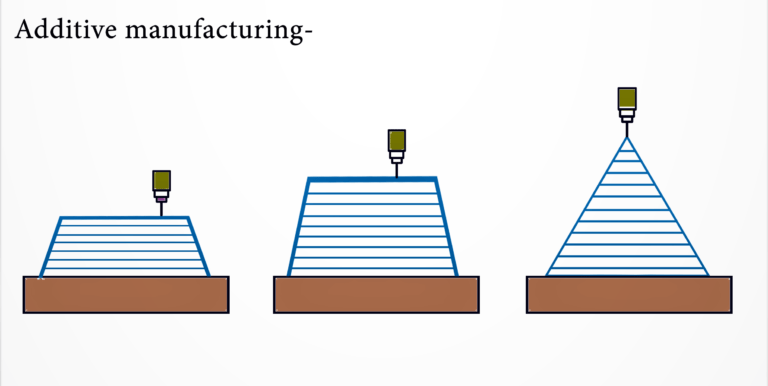There are polymers like ABS, PA (Nylon), or PC that can be both CNC machined and 3D printed, so it is a common question when to use polymer CNC machining and when to use 3D printing. This article will walk you through the main differences between machining and printing polymers and suggests several questions you need to ask yourself to choose the right option.
Two approaches: subtractive and additive manufacturing
While the end results might be similar, CNC machining and 3D printing operate in ways opposite to each other.
CNC machining (subtractive process)
CNC machining is a subtractive manufacturing process that begins with a solid block of plastic material, cut or shaped into the desired product by removing excess material using a variety of sharp rotating tools or cutters.

3D printing (additive process)
3D printing is additive manufacturing, which means the initial material is built layer by layer, rather than removed as in subtractive manufacturing. 3D printing creates three-dimensional objects from reading a virtual computer design and reproduces them into a real and tangible part by using material filaments or powders.

Learn more about the differences between subtractive and additive manufacturing.
Checklist to choose between CNC machining and 3D printing
When it comes to the selection of either CNC machining or 3D printing to produce polymer parts, we recommend you to answer a few basic questions.
How strong should my part be?
CNC machined parts are isotropic and exhibit usually better mechanical and thermal properties compared to 3D printed parts which are anisotropic since they are built layer by layer and structural weaknesses might arise between those layers.
Conclusion: It would be better to go with CNC machining if your part’s strength is a priority (e.g. functional parts of a machine). If the strengths can be compromised for aesthetics or other qualities, 3D printing is the go to option (e.g. prototypes).
How quick do I need the part?
Considering the above part has to be manufactured with ABS, the turnaround time for 3D printing with FDM technology is about 3-5 working days on an average at Xometry, whereas for CNC machining, the turnaround time would begin from 10 days.
Conclusion: Go with 3D printing if the part is needed quickly.
How many parts do I need?
Number of parts required is a key factor in deciding the process. For larger quantities CNC is likely to be cheaper compared to parts printed in bulk. For low volumes (below 10), 3D printing is more appropriate and cheaper. For simple 3D printing processes like FDM or SLS used with affordable plastics like ABS, PC, Nylon, single parts or small quantities (identical and non-identical), 3D printing is undoubtedly the option to go for. MJF is also another viable option for midsized quantities and very common.
Let us check the prices using the FacFox Instant Quoting Engine with this reference model.

Considering the above reference part, the cost per quantity analysis for 3 technologies, CNC machining (ABS), FDM (ABS) and MJF (PA12 Grey) is as follows. It demonstrates how dramatically the price per piece goes down for CNC machining of ABS, remains the same for FDM and slightly goes down for MJF. With large batches (e.g. over 500) the price for CNC machining of ABS will be lower than any 3D printing, especially with the parts where there is more material to remove than to print it.

Conclusion: Go with 3D printing for small series and go with CNC machining for mid-large series as the cost reduces with quantity and gets much lower. Consider MJF 3D printing for mid-sized series as the technology allows to print several parts simultaneously, which reduces price per unit.
Can my design be machined via subtractive?
Plastic freeform, organic geometries can be easily manufactured with polymer-based powder bed fusion processes, such as SLS or MJF, as they require no support. Even though FDM or SLA uses support structures, they can be removed later during post-processing. The ability to produce highly complex geometries is one of the key strengths of 3D printing. In CNC machining some complex geometries (e.g. lattice structure designs ) are impossible as the tool cannot access all the surfaces of the components.

Conclusion: Go with 3D printing if your design has features that cannot be produced with CNC machining
What sizes and tolerances are needed?
CNC machining ultimately provides better performing properties and greater dimensional accuracy than 3D printing. If your product requires a unique design with tight tolerances, 3D printing may not be the best option for mechanically critical components.
| Tolerance | Min. Layer Thickness | Max. build volume | |
| CNC | ± 0.025 – 0.125 mm | cutting depth 0.01 mm | Up to 2000 x 800 x 1000 mm |
| SLS | ± 0.3 mm | 0.1-1.5 mm | Up to 340 x 340 x 605 mm |
| FDM | ± 0.3 mm | 0.2-0.8 mm | up to 914 x 610 x 914 mm |
| MJF | ± 0.3 mm | 0.08 mm | up to 380 x 284 x 380 mm |
In comparison, CNC machining clearly is way ahead of the 3D printing in terms of mechanical properties it imparts to the material. Considering the requirement of precision components in fields like medicine and aerospace, CNC is the best option as it provides almost no margin for error.
CNC machining can also manufacture larger parts than common 3D printing technologies like FDM, SLS, or MJF.
Conclusion: Go with CNC machining if you need tight tolerances, dimensions as well as large-sized components
Which material do I need?
There are polymers that can be both machined and printed (e.g. ABS, PA, PC), but 3D printing has a much larger selection of polymers with advanced properties. For example, there are r special resins like CLIP resins used in Carbon DLS and flexible plastics (TPU) which offer high performance and flexibility, CNC machining is not at all an option.

Conclusion: If you need rigid plastics like ABS, PC, or PA, both CNC machining and 3D printing can be used, whereas for flexible and resin-like plastics, 3D printing is the only option to go for.
Quick check
There is no clear-cut solution as both technologies are very competent and useful, the most appropriate one will depend on the material, geometric complexity, manufacturing volume, and budget as discussed above. Here is the summarized information for a quick check.
| Polymer CNC machining | 3DP | |
| Mechanical properties | ⭐⭐⭐ | ⭐ |
| Prototyping | ⭐ | ⭐⭐⭐ |
| Cost | Cheaper for mid-large series | Cheaper for small series |
| Turnaround time | ⭐ | ⭐⭐⭐ |
| Polymer selection | ⭐⭐ | ⭐⭐⭐ |
| Design complexity | ⭐⭐ | ⭐⭐⭐ |
| Dimensional accuracy | ⭐⭐⭐ | ⭐ |
| Details and resolution | ⭐⭐⭐ | ⭐⭐ |
| Large part size | ⭐⭐⭐ | ⭐ |
To find out which is best for your particular job and compare the prices, check out FacFox’s Instant Quoting Engine.